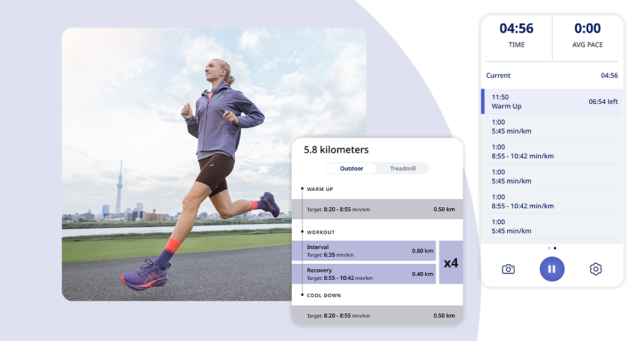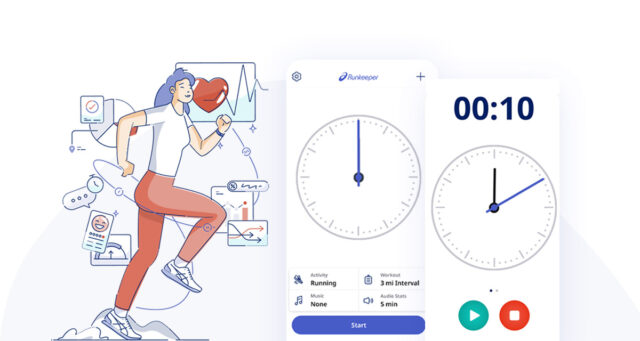A 5K is a great way to challenge yourself to reach your goals. Whether you are looking to increase your speed, lose weight, or finish your first race, the 5K (3.1 miles) is a great distance to push yourself a bit, and most importantly, have fun!
For runners who are new to running, it is sometimes difficult to know what to expect in a 5K race and for more experienced runners, it is easy to be dismissive of your training or train the same way as you would for a longer race. Here are five tips to help you reach the finish line, hit those goals, and run your best 5K.
Establish a baseline
Before you jump right into running or setting a goal and training for a 5K race, it is important to know what you are working with. For beginner runners, this might mean building up an aerobic base using the run-walk method. Beginners should not worry about the kilometers or miles you run at first, but rather focus on the amount of time you can run continuously. It is crucial to remember to be patient and build up your running slowly to avoid injury. Remember, don’t get frustrated! Every run (no matter how fast or slow) makes a difference and is helping you work towards that final goal.
For more established runners setting your baseline means discovering how fit you are at the moment. A great way to do this is by running a fast 5K at the beginning of your training to help you set an appropriate goal and understand the paces you should try to hit throughout your training. If you know you are injury-prone or have been taking some time off, it might be best to spend four to six weeks slowly building up a strong base.
Both beginners and those who are injury prone or coming off an extended break from running will want to be conservative in your early training. Consider cross-training as well to help build up your level of fitness while avoiding too much impact — remember staying happy and healthy should be the primary goal.
Set a goal and work toward it
Once you’ve established your base-level goal it’s helpful to set a goal for your race. Whether that is to finish, to set a new PR, or just simply to get out there and celebrate being a part of the running community, every goal requires some degree of preparation. A training plan is an extremely helpful way to help keep yourself on track and ensure that you are progressing.
The plan should be appropriate for your current level of fitness. For brand new runners, this might include running and walking, and should focus on building up your fitness and confidence running for longer periods of time.
For more experienced runners, a good plan will consist of one or two more difficult speed-focused workouts, a longer endurance-focused run, and easy runs balanced with plenty of rest and recovery in between. Remember difficult workouts should never be completed back to back and you should always include easy runs, cross-training, or recovery, between speed workouts and long runs.
The Runkeeper app offers training plans for races ranging from the 5K to the full marathon as part of our Runkeeper Go™ premium service. These plans have been developed by the ASICS Institute of Sport Science and utilize a unique algorithm to help you work toward your goals.
Read more: How to Make Running a Habit
Don’t forget your core
Surprise! Running is about more than just running! Developing a strong core and other supporting muscles can be really helpful in preventing injury and allowing you to run faster during those all-important speed workouts. Incorporating even just a few strengthening exercises into your routine can make a huge difference and really come in handy on race day as your body is more fatigued at the end of the race. Some of our favorites include planks, bridges, and lunges. This article on preventing injury includes more helpful exercises.
Warm up and cool down
It may seem counter-intuitive to beginner runners to get your heart pumping before you run it can actually make a world of difference! The most important thing is to make sure your muscles and joints are ready to go and your mind is prepared to take on the workout ahead. Skipping or light jogging can be great but mixing it up with dynamic stretches is even better. Arm circles, trunk circles, and ankle rotations are all great exercises to help release the fluid that helps lubricate your joints. Exaggerated skipping or drills that work on your form are also great exercises that help build strong running form.
As much as you may want to get on with whatever you have to do after your workout, your body will thank you for taking the time to stretch out a little and thank it for all the hard work you just accomplished. Leg swings are great for maintaining hip mobility and shaking out the legs and some light static stretching will make a difference as you get closer and closer to race day and you are running further and more regularly.
Pace yourself and have fun
Whether you are a seasoned expert or brand new to running, it is easy to get caught up in all the excitement and emotion at the start of a race. Remember to stick to your plan, take deep breaths, and run your race! Adrenaline can be powerful (especially if you’re chasing a new PR), but keeping yourself in control and trusting your training will make a world of difference. It might be difficult, and you may face some challenging moments along the way but remember that this is your moment, and every step of the way you’re working towards that goal.
So who’s ready to race? Get out there and share your journey with us, we’re with you every step of the way.






